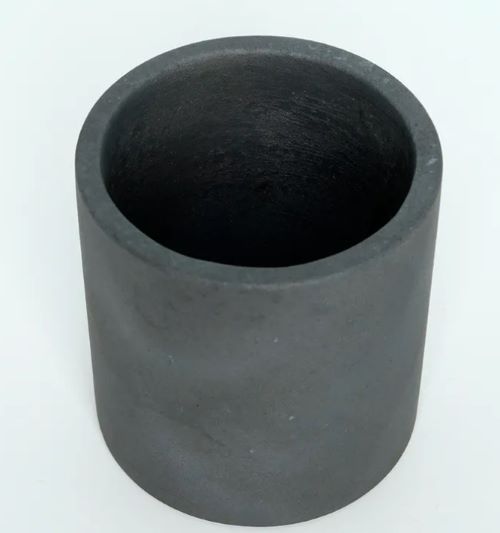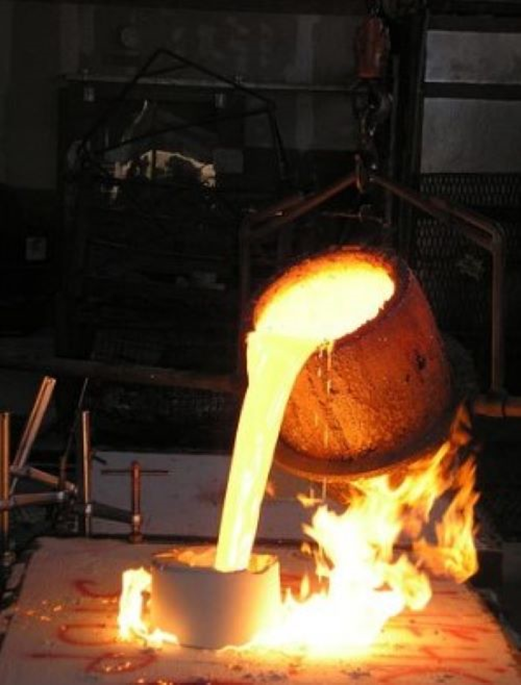Introduction
Crucibles are widely used in metallurgy, chemical processing, and a variety of industries. Among these crucibles, graphite crucibles are useful for the smelting of non-ferrous metals and alloys with their desirable properties. Let’s have a detailed discussion about the features, competitiveness, and uses of graphite crucibles. Hope that you can have a better understanding of graphite crucibles used for metal smelting.
What Are Graphite Crucibles?
Graphite crucibles are containers that can be used in high-temperature environments. They are ideal for melting aluminum, brass, gold, silver, and other non-iron metals because of their thermal conductivity, heat shock resistance, and low reactivity with molten metals.
Graphite crucibles could be categorized into three types according to their constituent materials. They are clay-bonded graphite, pure synthetic graphite, and graphite reinforced with silicon carbide. Each type offers distinct advantages depending on the melting temperature, metal type, and operating conditions.
| Crucible Type | Composition | Max Temp | Suitable Metals | Corrosion Resistance | Typical Use Cases |
|---|---|---|---|---|---|
| Clay-Graphite | Natural flake graphite + clay | ≤ 1600°C | Aluminum, copper alloys | Moderate | Non-ferrous casting, foundries |
| Pure Graphite | Synthetic graphite | ≤ 2000°C | Gold, silver, platinum | High | Jewelry, lab, precision smelting |
| Graphite-Silicon Carbide | Graphite + silicon carbide | ≤ 1800°C | Copper, magnesium alloys | High | Continuous casting, induction furnaces |

Properties of Graphite Crucibles
Graphite crucibles stand out for a range of thermal, physical, and chemical properties.
- Thermal Performance: Thanks to their thermal conductivity, the time for melting and energy consumption are reduced. These crucibles could bear rapid heating and cooling since they have excellent heat shock resistance.
- Chemical Stability: Graphite crucibles are rather stable, so they are resistant to corrosion and oxidation. These vessels are even able to delay the corrosion degree. They can also withstand acids and alkaline solutions.
- Non-reactivity: Graphite does not react with other materials. Thus, graphite crucibles do not adhere to the melt or mix with contaminations.
Materials that Can Be Melted in Graphite Crucibles
Different types of graphite crucibles match different metals and alloys.
- Graphite-silicon carbide crucibles are suitable for copper-based alloys and aluminum-based alloys due to their thermal shock resistance.
- Graphite crucibles are employed for gold and silver melting because they have a small thermal coefficient and strong strain resistance to rapid heating or cooling.
- Graphite crucibles are an ideal choice for brass melting because of their durability. It could heat up quickly before the brass metal or alloy oxidizes.

Figure 2. Metal Melting
How to Choose the Right Graphite Crucible
Selecting the ideal crucible involves more than just matching size or shape. The following factors should guide your decision:
- Type of Metal Being Processed: Precious metals such as gold or silver demand high-purity crucibles like synthetic graphite, while aluminum and copper benefit from graphite-SiC due to its enhanced durability and corrosion resistance.
- Melting Volume and Frequency: Large-scale operations may require thicker-walled crucibles for durability, or custom-fabricated sizes to accommodate unusual batch volumes. Frequent thermal cycling calls for crucibles with excellent thermal fatigue resistance.
- Furnace Compatibility: It is essential to ensure that the selected crucible is designed for use in your specific furnace type—whether it’s an induction furnace, gas-fired setup, or electric arc configuration.
- Process Environment: Factors such as atmospheric exposure, flux composition, and crucible movement also influence the choice of material and design.
How to Handle Graphite Crucibles Properly?
Please follow the following instructions so that your graphite crucibles maintain a good state.
- Inspect them in the beginning in case there are any abrasions or cracks.
- Do not stack them with each other to avoid cracks or breaks.
- Store these crucibles in dry and clean areas so they can be used for a longer time.
- You can use hydrochloric acid to clean out most compounds. You can employ nitric acid to remove carbon compounds.
- You’d better add flux after metals or alloys are fully molten. If the flux is added when the worked material is solid, the crucible might be damaged.
Related reading: Lab Tips: How to Use and Clean Crucibles?
Conclusion
Graphite crucibles continue to be the material of choice for modern metal melting operations due to their high thermal stability, chemical resistance, and adaptability across a wide range of smelting environments. By selecting the appropriate type, following best practices, and sourcing from a reliable supplier, industrial buyers can optimize performance, reduce costs, and maintain consistent metal purity.
Partner with Stanford Advanced Materials for proven graphite crucible solutions tailored to your specific needs. Contact us to discuss your requirements or to receive a sample and quotation for bulk orders.




